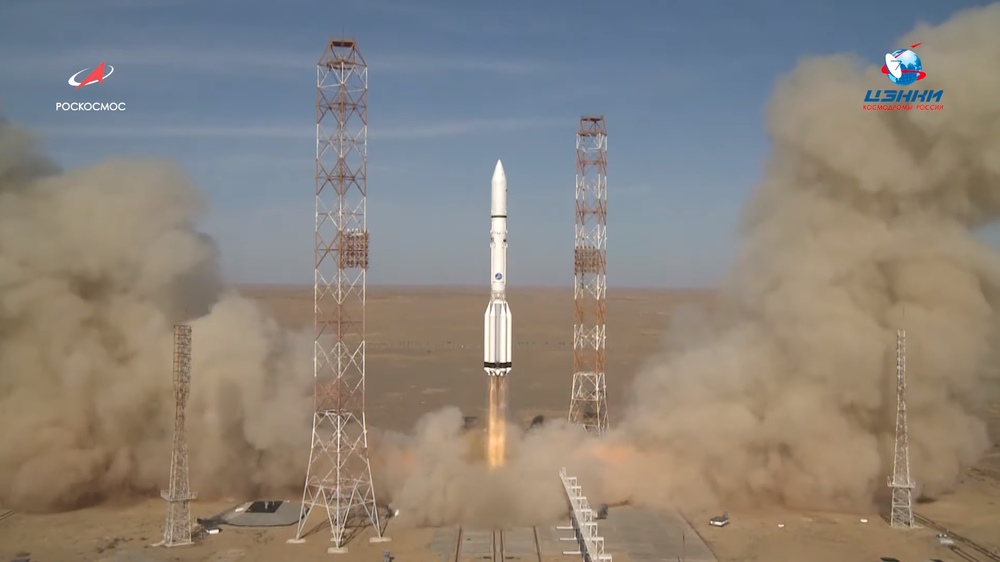Proton-M Successfully Launched Two Satellites into Orbit
 Baikonour Cosmodrome, Kazakhstan, October 10, 2019--On October 9, 2019, at 10:17:56 the Proton-M carrier rocket with Briz-M booster together with Eutelsat 5 West B and Mission Extension Vehicle-1 satellites successfully launched from launchpad No.39 pad No.200 at the Baikonur Cosmodrome.The Proton active flight time lasted 582 sec, after that the orbital unit was injected to the suborbital trajectory. Following that, Briz-M booster started injecting the spacecraft to target orbits. Five scheduled engine switch-on sessions were conducted during the injection period.
Baikonour Cosmodrome, Kazakhstan, October 10, 2019--On October 9, 2019, at 10:17:56 the Proton-M carrier rocket with Briz-M booster together with Eutelsat 5 West B and Mission Extension Vehicle-1 satellites successfully launched from launchpad No.39 pad No.200 at the Baikonur Cosmodrome.The Proton active flight time lasted 582 sec, after that the orbital unit was injected to the suborbital trajectory. Following that, Briz-M booster started injecting the spacecraft to target orbits. Five scheduled engine switch-on sessions were conducted during the injection period.
According to the schedule, on October 10, at 01:53 UTC the scheduled separation of Eutelsat 5 West B satellite took place at target orbit, 18 minutes later at 02:12 UTC Mission Extension Vehicle-1 also separated. Both satellites’ operation was transferred to the clients, who have already started checking their onboard systems.
The general injection time from the launch to the second spacecraft separation from the booster block totaled 15 hours and 54 minutes. The Russian launch vehicles (Proton-M carrier rocket and Briz-M booster) worked as expected. Eutelsat 5 West B and Mission Extension Vehicle-1 satellites launch was the fourth launch of the Proton-M in 2019, 97th according to the rocket commercial operation contracts signed by International Launch Services and 108th since the beginning of its operation.
The first satellite - Eutelsat 5 West B will provide continuous work and improved quality for the markets of France, Italy and Algeria in Ku-band load 35 equivalent to the 36 MHz frequency transponders of the three service areas.
The second satellite - Mission Extension Vehicle-1 will be the first to provide satellite life prolongation services. MEV-1 will dock to client satellites using existing satellite capabilities to control height and orientation of the spacecraft assembly. During its 15-year life period, MEV-1 will be able to dock and undock several times which will allow servicing several client satellites.





